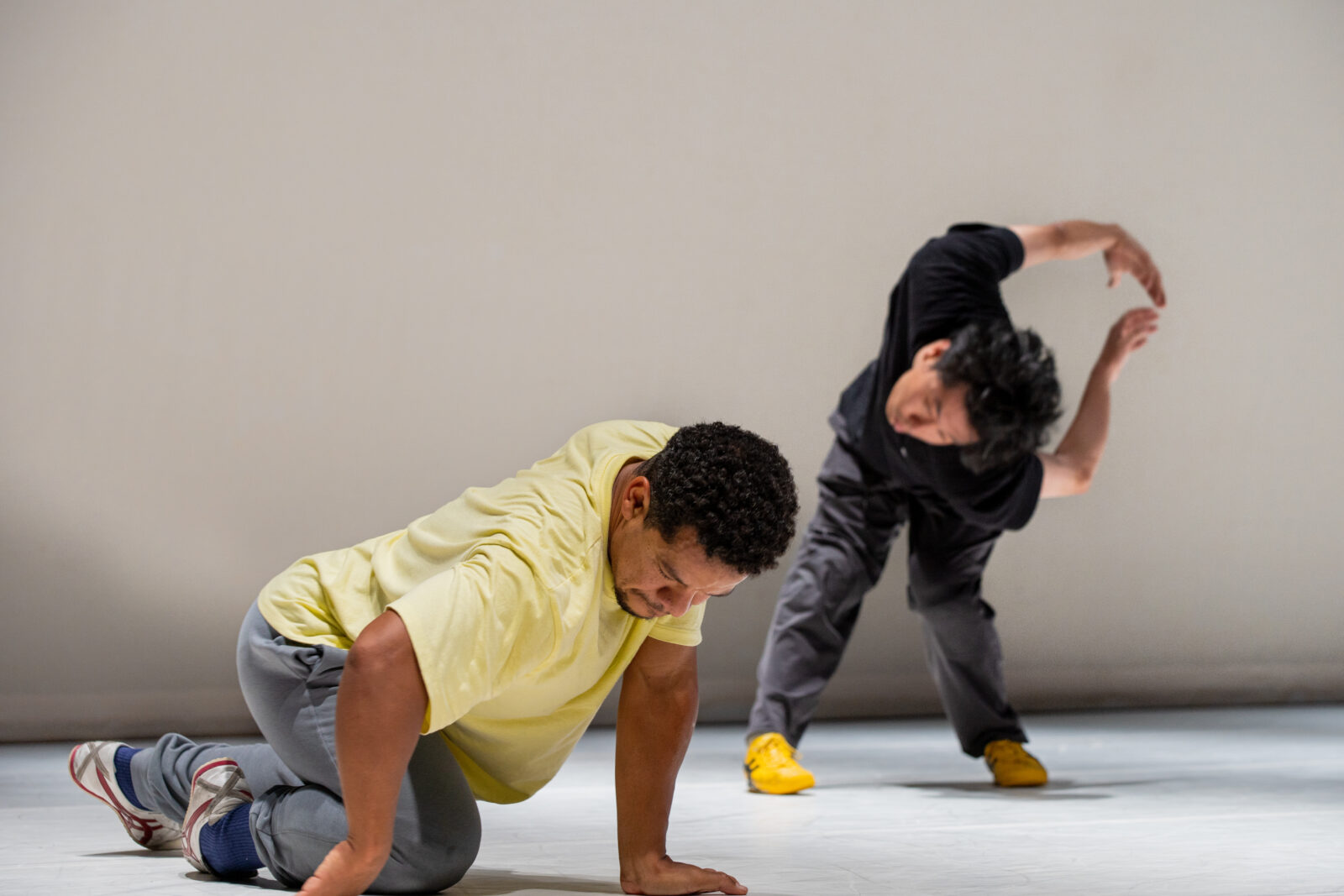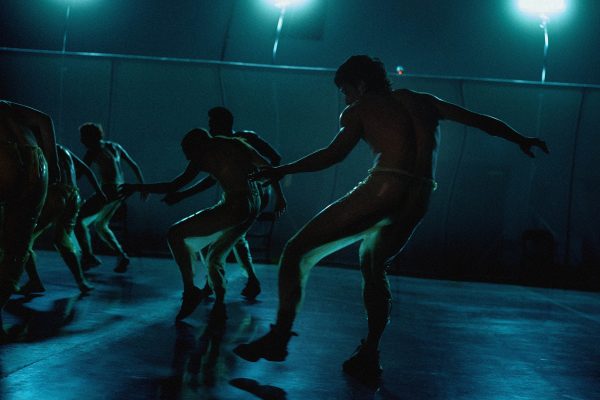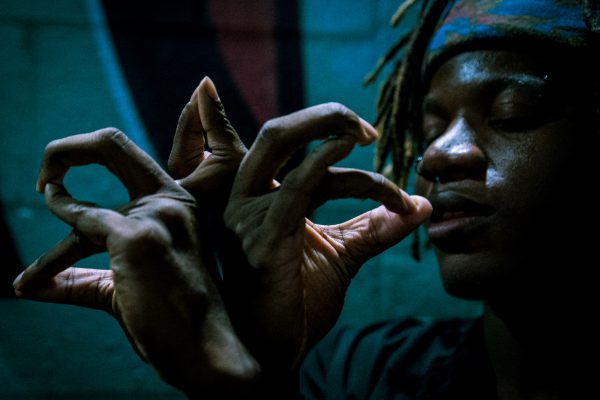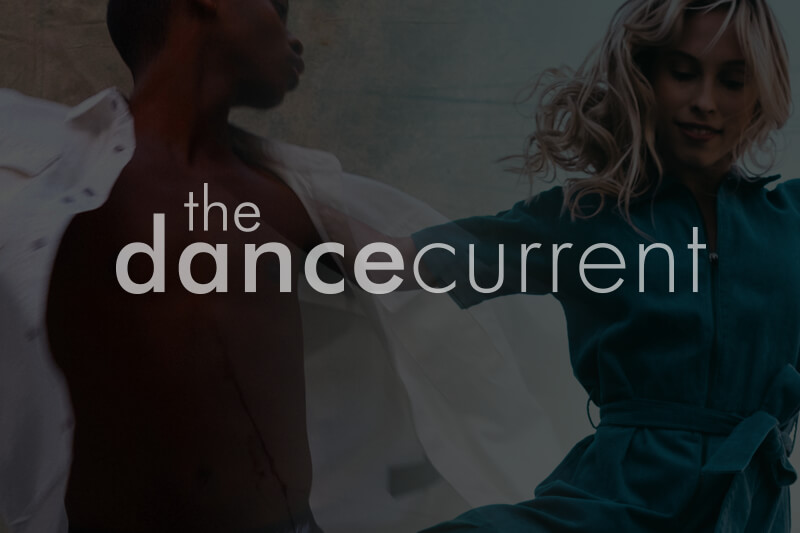Deciphers was presented at MAI, Montréal, arts interculturels from February 14 to 17. These performances were part of a cross-Canada tour that started in Vancouver at the PuSh Festival and moved through Toronto, where the show was co-presented by Harbourfront Centre and DanceWorks. The final presentations occur at Ottawa’s National Arts Centre on February 22-23.
The stage is an open canvas for co-creators and dance artists Naishi Wang and Jean Abreu. In the first minutes of Deciphers, as ticket holders filter in, the pair sits side by side on the white stage floor, silently adding scribbles, shapes and sketches to an eclectic collage that fills a long rectangular paper sheet. At one point, Wang looks out at the audience, catches my eye and begins to create a caricature of me, big glasses, wide smile. There’s playfulness to what’s going on.
A bit of background: Deciphers emerged from an international collaboration between Wang, a Toronto-based artist hailing from China, and Abreu, who was born in Brazil and calls the United Kingdom home. The duo was selected to participate in the Visiting Dance Artist Program, a joint initiative of the Canada Council for the Arts and the National Arts Centre (NAC), for its 2020-21 iteration. When the pandemic struck, they had to shift gears, like everyone, and collaborate virtually. The online platform wasn’t ideal, but the artists found ways to connect through exchanges of letters, images and poems. In 2021, they were finally able to meet in person at the NAC for a four-week artistic residency. Deciphers is a kind of convergence that builds on the conversations, emotions and feelings imbued into the artistic material, transmitting all of this exchange into and through the medium of the body.
The canvas that preoccupies the artists in those first few minutes of the show is framed on either side by two long tubular fluorescent bulbs (visual design by Ivy Wang). Soon, Abreu and Wang rise and go to opposite extremes of the work; they face off, lifting the piece, then edge closer to one another, crumpling the paper mass. Expressionless, enigmatic, neutral, they literally dig into that ever-growing ball, sinking to their knees. Slowly, tenderly, they embrace. At first, the intimacy suggests a bond, but as they pull on each other’s sweatshirts, still close, they invite new movement, using weight, balance, momentum and gentle pushing and falling. In the immediacy of the moment, what becomes apparent is that with each step and gesture, they are propelled into their individual inner worlds, enveloped in the subdivided parts of their bodies, still connected, yet apart.
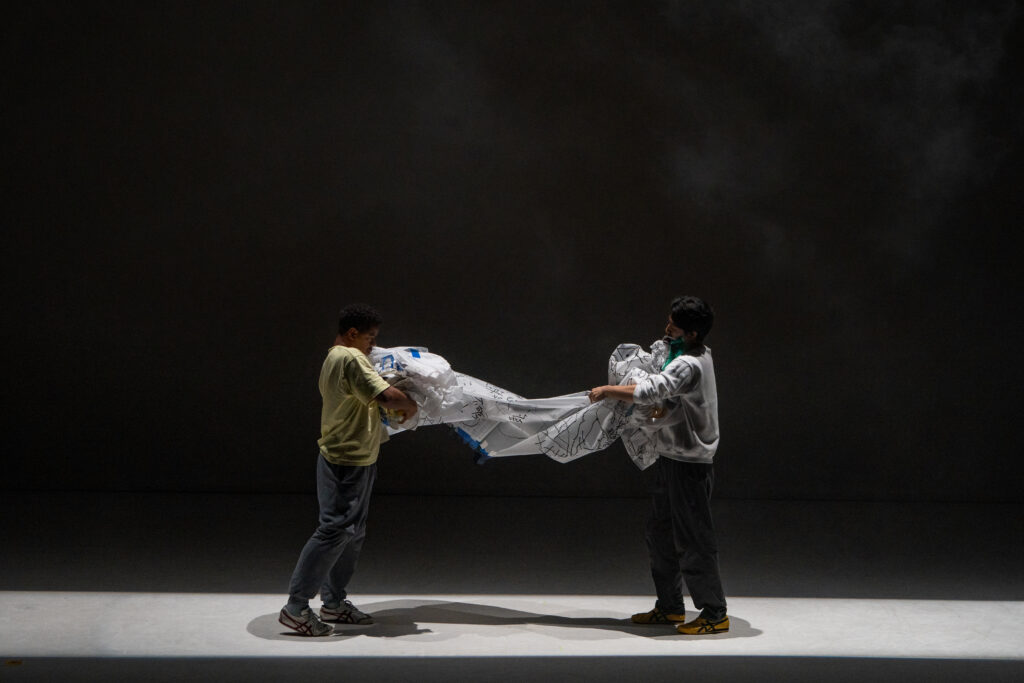
In one section, the industrial electronic score, by Olesia Onykiienko, ricochets in what can only be described as an undetermined soundspace. The dancers’ movement is loose, free, yet continues to be interiorized. Eyes are closed. Their bodies seem suspended, almost floating. The translation of emotion and connection through the body appears obscured, but I don’t doubt that specific meanings reside for the dancers. What’s developed is a serious study in forms and textures.
At one point, Abreu and Wang look like they will speak, but no. Shafts of light (the design by Lucie Bazzo) demarcate the space, defining boundaries for each of the performers. Likewise, the dancers, in their movements, seem to measure the topology of the theatre space. Their interdependent presence conveys an invisible yet indelible link between them. A quivering hand leads a lithe Wang forward, and that gesture develops into a wave. There’s a vacant quality to his gaze. Meanwhile, a sound creaks out of Abreu’s mouth. Wang’s head is thrown back, his right arm stretched out, as if marking the space. Separate bodies, separate lives, one flowing, one cracking.
Shortly afterward, words do spill out, Portuguese for Abreu, Mandarin for Wang. What’s communicated might have specific meaning, but as I do not speak either language, what I hear without translation is Abreu’s emphatic voice and Wang’s more declarative cadence. Voices rise gently; words become explosions and shouts, felt more than understood. Perhaps sound as babble. English spills in ever so briefly. I hear Wang say, “Enough… Not Enough.” The piece continues.
Within the structured improvisatory quality of the movement, senses are heightened as these skilled and compelling performers engage their wits. Wang’s wavering hand returns later, again drawing him from a wall into the space, his whole body quaking. He crouches, hunched over the paper ball of shared images, memories and reflections, seemingly absorbing the contents. It’s a glorious and indelible moment of beautifully articulate dance. What’s heightened here might be encapsulated into the concluding moments of the piece. Abreu and Wang traverse the space on all fours, heads nodding, swinging, permutating the movement. The connection between the artists reflects a study in difference and commonality, a kind of measuring of where I have been and where I am going. What’s left is audible breath, expended energy, something very human, with rays of fluorescent light illuminating what remains in that psychic space.
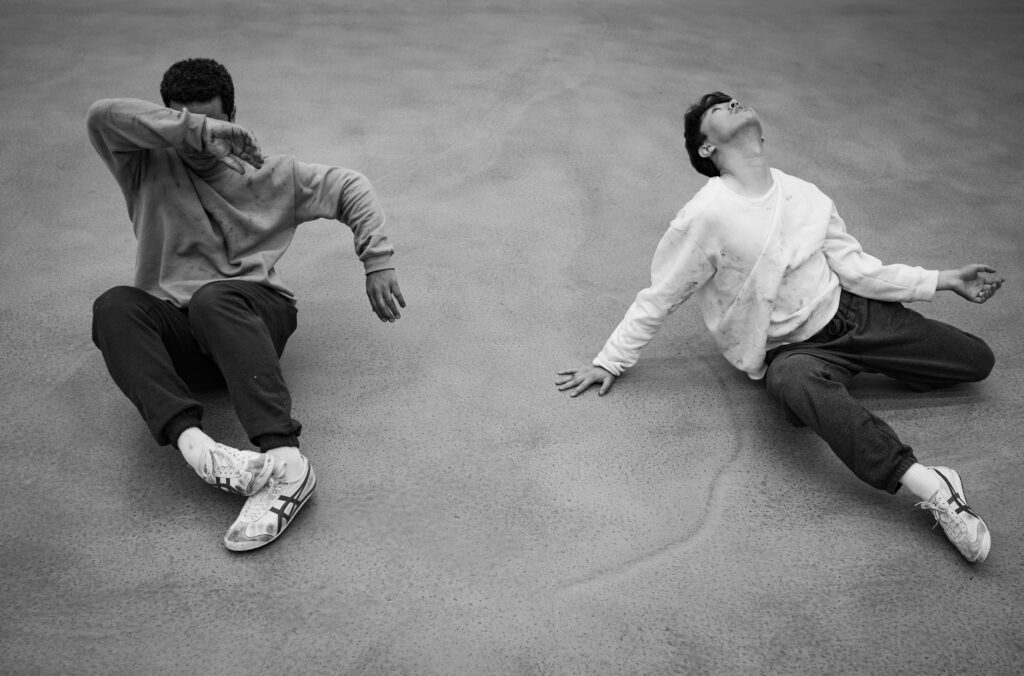
Tagged: Contemporary, Performance, review,
